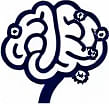Collaborative Strategies and Mental Models for Effective Teamwork
 by Lilian Nienow
by Lilian Nienow
Collaborative strategies serve as essential mental models that enhance team performance and innovation. By focusing on shared goals and communication, individuals can improve decision-making and problem-solving in various settings. This article examines practical applications and benefits for professionals and learners.

Collaborative strategies form a key part of mental models, helping people work together more effectively. These approaches allow teams to combine ideas and resources, leading to better outcomes in projects and daily tasks. For instance, collaboration involves sharing knowledge to solve problems faster.
The Basics of Collaborative Strategies
In many professional environments, collaborative strategies rely on clear communication and mutual respect. These methods encourage group input, ensuring that diverse perspectives contribute to decisions. A simple example is brainstorming sessions where team members build on each other's ideas.
Mental models like these provide frameworks for thinking about interactions. They help individuals anticipate how actions affect the group, promoting harmony and efficiency. By applying such models, teams can avoid common pitfalls and achieve goals more smoothly.
Benefits in Business and Psychology
Business settings often use collaborative strategies to drive innovation. Companies that foster teamwork see improved productivity and employee satisfaction. Team collaboration can lead to creative solutions that a single person might overlook.
In psychology, these strategies relate to cognitive development. They show how social interactions shape thinking patterns and learning processes. For example, group discussions can enhance critical thinking by exposing people to different viewpoints.
One advantage is the ability to handle challenges collectively. When faced with obstacles, teams using effective strategies adapt quickly, drawing on shared strengths. This approach not only boosts morale but also results in higher quality work.
Practical Applications
To implement collaborative strategies, start with defining roles within a team. Each member should know their responsibilities, allowing for smoother cooperation. Tools like shared documents or virtual meetings can facilitate this process.
In educational contexts, mental models for collaboration help students learn from peers. Group projects teach skills such as negotiation and compromise, which are valuable in future careers. Professionals might apply these in meetings to align on objectives and track progress.
Consider a scenario in a workplace where a project deadline is approaching. By using collaborative strategies, the team divides tasks based on expertise, monitors progress together, and adjusts plans as needed. This method ensures everyone contributes meaningfully.
Challenges and Solutions
While beneficial, collaborative strategies can face issues like miscommunication or conflicting ideas. Addressing these requires active listening and feedback mechanisms. Teams that establish ground rules early often navigate such problems more easily.
For lifelong learners, developing these mental models means practicing in various situations. Whether in community groups or online forums, consistent application builds confidence and skills over time.
Real-World Examples
History offers examples of successful collaboration. Think of scientific teams working on major discoveries, where shared efforts led to breakthroughs. In business, partnerships between firms demonstrate how strategies for collaboration create competitive advantages.
These cases highlight the importance of preparation and adaptability. By focusing on common goals, groups can turn individual efforts into collective success.
Enhancing Personal Growth
Beyond teams, collaborative strategies contribute to personal development. They encourage empathy and open-mindedness, traits that benefit everyday interactions. For curious individuals, exploring these models can lead to deeper insights into human behavior.
In summary, collaborative strategies as mental models offer practical ways to improve teamwork and cognitive growth. By integrating them into daily routines, people can foster better relationships and achieve more in their endeavors.
